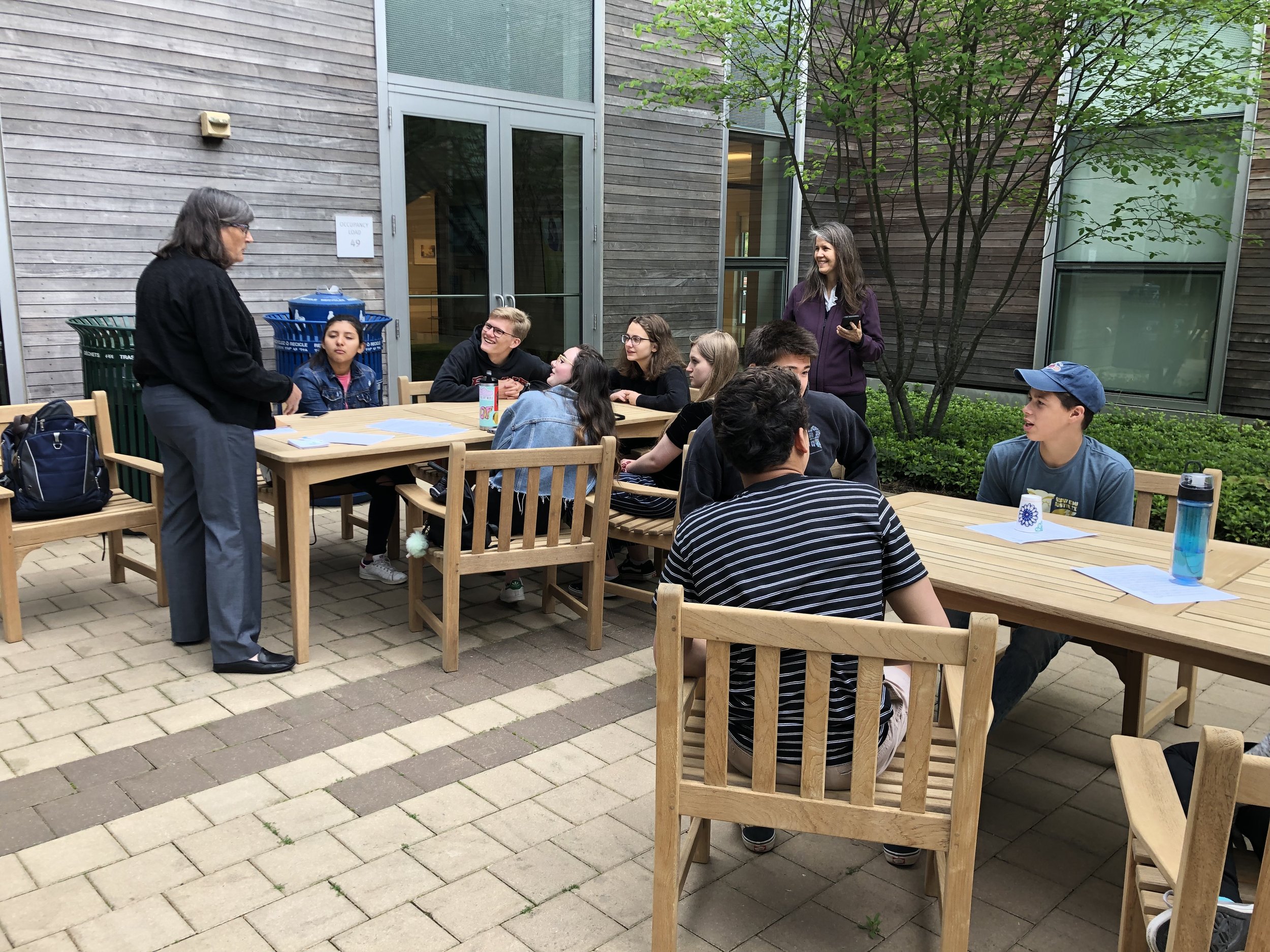A Youth-Led Climate Justice Summit Brings Students Together to Hone Advocacy Skills
Cierra Kaler-Jones, Education Anew Fellow, attended the Youth Climate Summit USA and shared resources about Teaching for Change and the Zinn Education Project.
“Repeat after me: I will actively speak and teach when I can. I will speak truth to power.”
Jerome Foster II opened the Third Annual D.C. Area Climate Justice Summit with a moving speech that encouraged his peers to take a stand and speak up about the importance of climate justice. The summit, organized and run by Youth Climate Summit USA, is completely youth led. This year’s D.C. area event took place on April 24th at the Silver Spring Civic Center in Silver Spring, Maryland.
The organization hosts summits across the country, including D.C., Minnesota, and Georgia, with the mission to train young people to be effective advocates for climate justice. Simply put, their mission statement is to give youth tools to take control of their future.
After the opening keynote, students were able to attend a number of small group breakout sessions including Lobbying 101, Balancing Activism with School and Daily Life, Climate Science Basics, and more. Organizations including Zero Hour and Sunrise Movement presented information about how to get involved in climate justice organizing, while also opening up critical conversations about the effects of climate change.
In their informative presentation, Zero Hour tackled how four systems of oppression (colonialism, patriarchy, racism, and capitalism) are linked to climate justice and posed several strategies to make a difference, including backing legislators who support climate justice.
Sunrise Movement not only left the students with a call to action, but some inspiring words,
We deserve better and we’re going to be the ones to do it!
Another group focused on discussing people power versus institutional power. The student facilitators of the group asked questions like,
It’s not a bad thing to have a structure, but how do you build that structure?
How do we, as a community, organize where we’re all sitting at a table, have a shared goal, and get things done?
These questions sparked up conversation amongst the attendees about how important it is that young people work collectively to protect their environment and their futures.
Many of the sessions worked to bring students together to find ways to communicate and take action about the severity of climate change, especially recognizing that many of the young people already see and will continue to be affected by the negative impacts of climate change in their lifetime. A workshop on Lobbying 101 led students through a mock lobbying session, where they had to designate group roles and responsibilities, in addition to develop messaging around climate justice. At the close, students had to deliver their talking points to persuade the larger group.
There were also multiple tables where students could stop and gather more information from organizations like the Smithsonian and Zinn Education Project. Students were interested in additional resources about our Teach Climate Justice Campaign and how to bring lessons about organizing and climate justice to their schools. Art pieces were also on display for purchase to support local student artists and to highlight the importance of artivism in raising awareness about climate change.
If you’re interested in hosting your own climate justice summit, the organization crafted a How-To Guide to provide resources for students across the country to think creatively and strategically about climate advocacy.
The young people who planned the summit and those who attended are working to create a better future for all of us. They not only try to learn and gather as much information as possible, but take action and work together to advocate for climate justice.
Cierra Kaler-Jones is the Education Anew Fellow with Communities for Just Schools Fund and Teaching for Change. She is also a Ph.D. student at University of Maryland, College Park studying minority and urban education.


